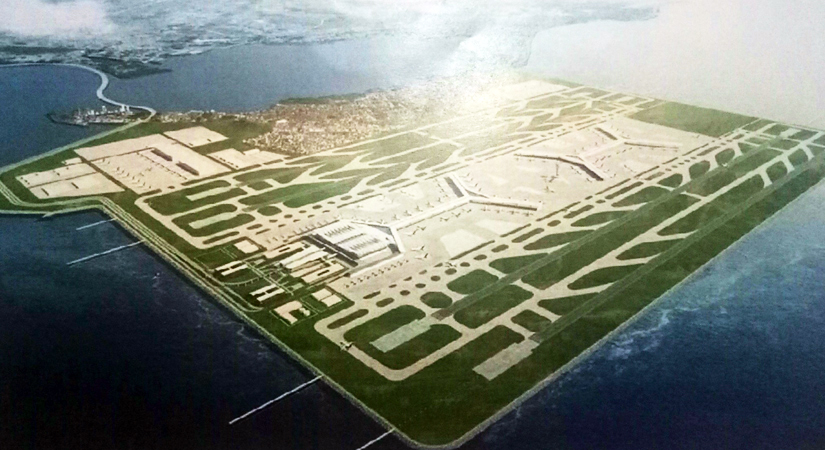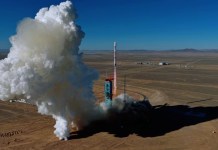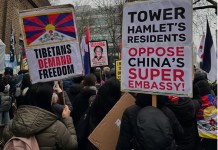A consortium composed of Philippine, European, and South Korean companies has secured a contract for a US$11 billion airport project in the Philippines that China previously eyed, the group announced on September 15.
Aliens Hovering Over Ukraine? Kyiv’s Main Observatory Says County’s Airspace Visited By Numerous UFOs With No Military Link
US Army Takes US Navy’s Tomahawk Cruise Missile, SM-6 Missile To Hit ‘Russia & China’ At Medium Ranges
Lockheed ‘ReWins’ $5.5B Swiss Fighter Deal; Lawmakers Clear Way For Procurement Of 36 F-35 Aircraft
The Cavite provincial government in the Philippines awarded SPIA Development Consortium the contract to develop the Sangley Point International Airport (SPIA), which is planned to help ease pressure on the overstretched Ninoy Aquino International Airport in Manila.
The consortium members include Philippine companies, Luis Virata’s Cavitex Holdings, Yuchengco Group’s House of Investments, and Lucio Tan’s MacroAsia.
Apart from that, the consortium also has foreign companies such as the construction arm of South Korea’s Samsung Group, Samsung C&T Corporation, Germany’s Munich Airport International GmbH, and Ove Arup & Partners Hongkong Limited.
The SPIA is planned to be a two-runway airport accommodating 75 million passengers annually, with the potential to be expanded to four runways and an annual capacity of 130 million passengers.

The project will involve the construction of a four-kilometer connector road, with arrangements for rail connectivity and fully integrated logistics and aviation support facilities. The consortium said that the project could create 50,000 jobs.
China Eyed Deal To Develop The Airport
In 2019, state-owned China Communications Construction Company, Ltd. (CCCC), in partnership with MarcoAsia, won the first bid for the SPIA development project for $10 billion.
However, the deal was terminated in January 2021 after the consortium failed to provide post-qualification documents, despite the Cavite provincial government extending deadlines four times.
There were also national security concerns raised by the Philippine defense establishment when the project was first awarded to the Chinese company because of the airport’s strategic location.
Sangley Point, a former US naval base, is home to the Philippine Fleet, Naval Installation Command, and Naval Sea Systems Command. According to a Philippine Navy official, it provides vital support services for the military, such as refueling, re-watering, shore power connections, berthing, and ferry services.
Also, the SPIA airport sits across Manila Bay, where the Philippine Navy headquarters is located.
The Cavite provincial government was reportedly planning to ask the Philippine Navy to vacate Sangley Point and ask the Philippine Air Force to move its operations to the SPIA to ease the security fears. However, the Philippine Navy opposed this plan.
The Philippine Navy strongly opposes their eviction out of Sangley Point in Cavite to accommodate an airport project w/ China Communications Construction Co. Inc., involved in illegal construction of artificial islands on maritime features near West Philippine Sea. #AtinAngPinas pic.twitter.com/cRkZOpAg6L
— Ryan (@rryyyaaaannnn) September 21, 2020
In the words of Retired Philippine Navy chief Alexander Pama, if the project had gone ahead with the involvement of the state-owned Chinese contractor, it would “be a dagger pointed to the heart of the nation.”
“Historically, the Navy and airbases were positioned there to protect the nation’s capital precisely because of its strategic location,” Pama said in a Facebook post.
Philippines Concerned
Under former Philippine President Rodrigo Duterte, relations between Manila and Beijing improved despite the Philippines being among the several countries with a territorial dispute with China in the South China Sea.
In July, Chinese government vessels, for the first time, issued direct threats against a Philippine-held outpost in disputed waters in the South China Sea.
A Chinese Coast Guard (CCG) vessel warned Philippine troops stationed on a rusting warship, BRP Sierra Madre, at Ayungin (Second Thomas) Shoal in the West Philippine Sea to “seriously consider the stand of the Chinese government” or else there will be “consequences” if they insist on “making trouble.”

The shoal is about 105 nautical miles (around 194 kilometers) off Palawan in the ‘West Philippine Sea,’ which is Manila’s term for the eastern portion of the South China Sea (SCS) that lies within the Philippines’ exclusive economic zone (EEZ) but overlaps with China’s nine-dash line claims in the SCS.
As per the 1982 UN Convention on the Law of the Sea, coastal states are allotted 200 nautical miles (370 kilometers) EEZ from their shores.
In 2016 the Permanent Court of Arbitration (PCA) in The Hague dismissed China’s nine-dash line claims in the South China Sea while explicitly stating that Ayungin Shoal (also known as Second Thomas Shoal) is within the Philippines’ EEZ.
However, Beijing continues to assert claims over the Ayungin Shoal, which it refers to as ‘Ren’ai Jiao,’ despite the shoal being 694 nautical miles (1,285 kilometers) from Hainan, China’s southernmost province.
Also, in November 2021, China turned high-pressure water cannons on supply boats after suspecting them of carrying construction materials, prompting them to abort the mission.
Concerns about Beijing’s aggressive actions in the South China Sea (SCS) have prompted Manila to increase military spending and cooperate more closely with countries like India, the US, and Australia that share the same concerns.
Just two months following the November 2021 incident, the Philippine defense chief signed a $375 million contract with India’s BrahMos Aerospace Private Limited (BAPL) to purchase the military’s first shore-based anti-ship missile system that he said would be used to defend the country’s sovereignty, especially in the disputed South China Sea.
Sangley Airport & China’s Strategic Triangle
China’s territorial claims also cover the Scarborough shoal, located within the Philippine EEZ, around 630 kilometers from the Second Thomas Shoal.
Late Philippine politician Roilo Golez once argued that China wanted to establish a strategic triangle over the South China Sea, connecting the Scarborough Shoal with the Paracel Islands – claimed by Vietnam, China, and Taiwan – and the Chinese-occupied parts of the Spratly Islands that include the Fiery Cross, Mischief and Subi Reefs.
According to Golez, such a triangle would enable China to exercise effective sea control and dominate the airspace over the South China Sea.
However, the Sangley International Airport is located close to the Scarborough Shoal, only about 340 kilometers east, and therefore according to the former Vice Commander of the Philippine Navy (Retd. Rear Admiral Rommel Jude G. Ong, if China had bagged the deal to develop the airport, it might not have to reclaim the Scarborough Shoal to establish the triangle.
Ong hypothesized that the three legs of the triangle would offer China mobility corridors for the movement of Chinese aircraft and troops in an extreme scenario.
- Contact the author at tanmaykadam700@gmail.com
- Follow EurAsian Times on Google News




